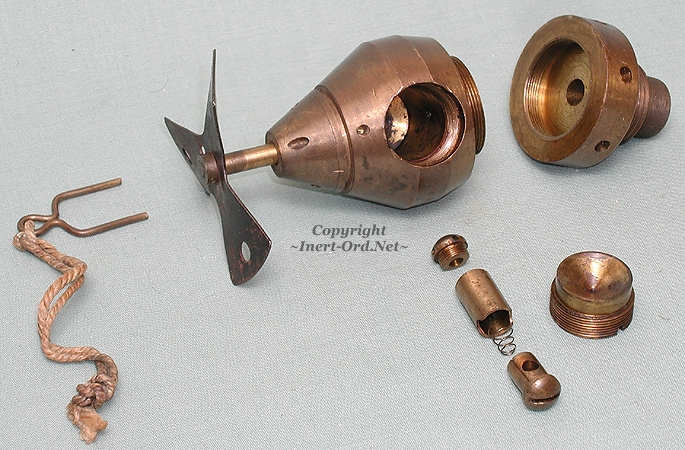


The Type 4 "Skipping-Bomb" Tail Fuze - U.S. Designation B-8 - was used in the 100kg and 250kg Type 3 "Skipping Model" Bomb.
It has an all-ways action with a 5-second delay.
This fuze was used in conjunction with the A-8 Series nose fuze, which was a direct-action fuze with a 2-second delay.
Skip bombing was a low-level bombing technique refined for use against Imperial Japanese Navy warships and transports by United States Army Air Forces in the Southwest Pacific Area Theater during World War II.
It proved to be very effective and the technique was copied by the Japanese, but they were less effective with this technique due to limitations in the arcraft available to them. Another drawback was that it took a lot of skill to perfect. As the war progressed, skilled pilots were in short supply for the Japanese.
The bombing aircraft flew at very low altitudes (~200 ft (65 m)) at speeds about 200mph (350 km/h).
Preferably a "stick" of two to four bombs were released, at a distance of 60–300 ft (18–91 m) from the side of the target ship.
The bombs would "skip" over the surface of the water in a manner similar to stone skipping and either bounce into the side of the ship and detonate, submerge and explode under the ship, or bounce over the target and explode as an air burst. All outcomes were found to be effective.

